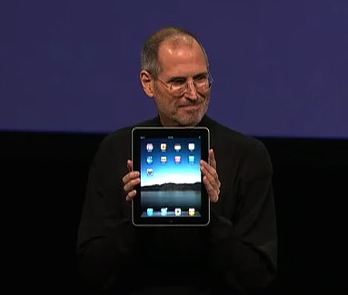Last time I spoke about applying for an MBA like Steve Jobs would, by which of course I mean not ‘as if’ you were Jobs, but going about it in the way he would — staying true to yourself and your motivations. Anyway, speak of the devil, the Apple iPad is out and I, like millions around the world, have been drawn into the media extravaganza surrounding its release. So I find myself watching Jobs doing the promotion keynote.
 There is Jobs in his blue jeans and sneakers and polo-top, just being completely his geeky self, and it inevitably makes me think about what ‘the image of success’ is these days in the business world, and how it’s changed.
There is Jobs in his blue jeans and sneakers and polo-top, just being completely his geeky self, and it inevitably makes me think about what ‘the image of success’ is these days in the business world, and how it’s changed.
Now, make no mistake, these launches are rehearsed and choreographed and fine tuned for mass marketing appeal – a bit like yesterday’s ‘State of the Union’ address come to think of it. Because projecting an image of success is important. And it is as important in MBA admissions as it ever has been. But Jobs is the poster boy for how that image is has changed. Bankers in dark suits and power ties loosing quantum fortunes and asking for taxpayer handouts somehow ain’t it right at the moment.
I think of the issues I have (and I know other MBA admissions coaches have the same problems) in getting applicants to free up and be themselves, and go beyond being trying to be a ‘square’ or a ‘suit’ in their applications. Why be another young guy in banker dress trying to get himself taken seriously, when the image of business success is currently so … not that.
I know Jobs is in the media-entertainment-electronics industry and a finance guy or even a mainstream consultant couldn’t dress like this – or not yet anyway. And I’m certainly not suggesting that anyone go to an MBA admissions interview in blue jeans. At your MBA interview you do need to show you can play the game.
But there is still plenty of room in what you say, and what you plan to do, and how you present yourself across your MBA application, to show what makes you ‘you’ and therefore unique. It’s definitely what Adcom wants. And chances are it’s what you really want too.

